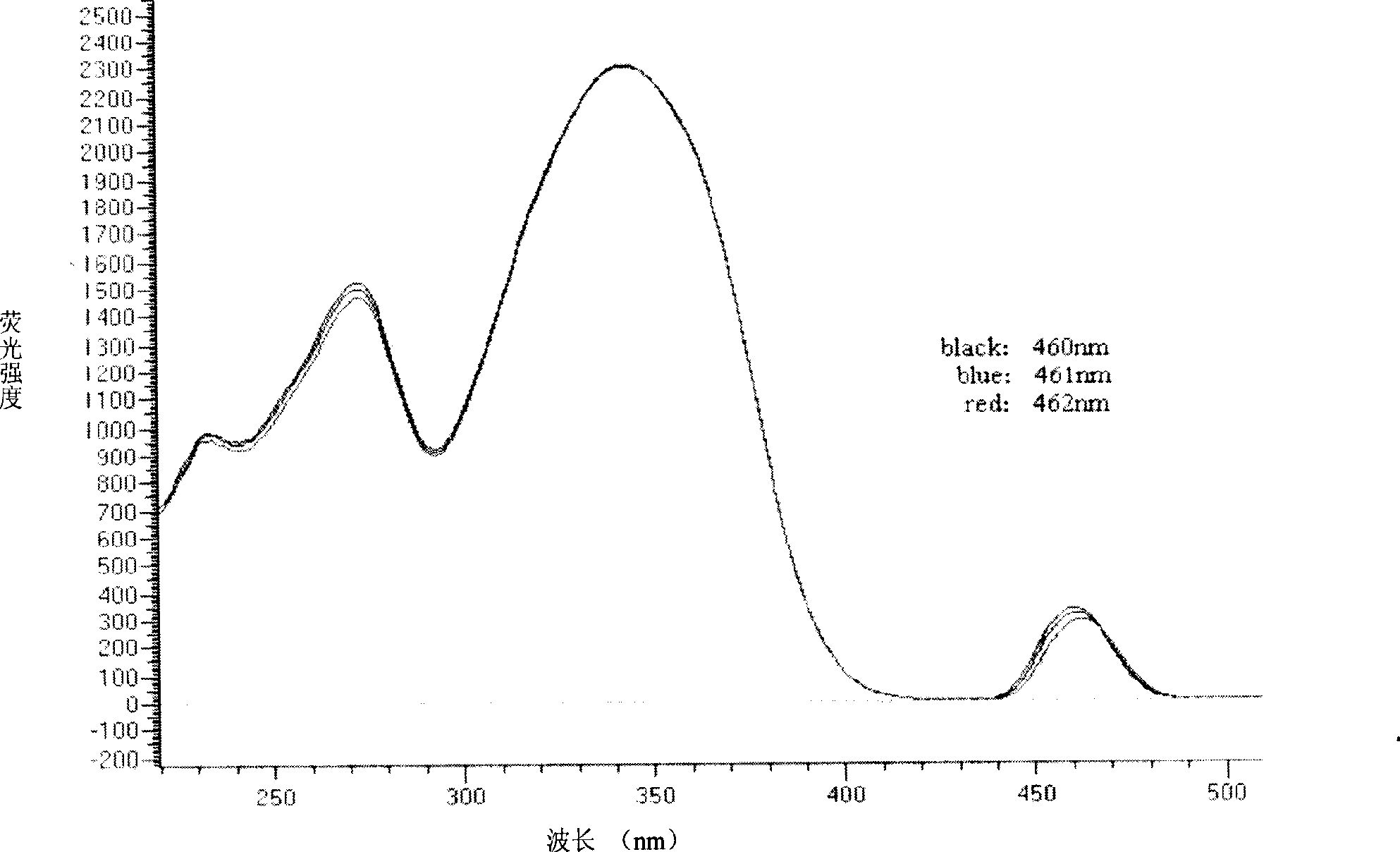Fast alive bacteria amount measurement by fluorescence method
A technology for rapid determination of the total number of bacteria, applied in the direction of fluorescence/phosphorescence, microbial determination/inspection, biochemical equipment and methods, etc., can solve the problems of determining the total number of Escherichia coli by NADH fluorescence method
- Summary
- Abstract
- Description
- Claims
- Application Information
AI Technical Summary
Problems solved by technology
Method used
Image
Examples
Embodiment 1
[0016] The scanning conditions were selected for NADH with a concentration of 0.1 mM, and the excitation and emission wavelengths were determined.
[0017] like figure 1 It is shown that under different excitation wavelengths in the range of 310nm to 390nm, scanning the range of 220 to 800nm, it is found that there is a single emission peak. With the change of excitation wavelength, the peak position in the emission spectrum has almost no shift, and its wavelength range is from 460 to 462nm, and when the excitation wavelength is 340nm, the maximum peak fluorescence intensity is reached.
[0018] Use the obtained three emission wavelengths of 460nm, 461nm and 462nm to re-scan to obtain the excitation peak, scan the excitation wavelength in the range of 220-550nm, and the fluorescence peaks appear at 232nm, 273nm and 342nm respectively ( figure 2 ).
[0019] With 232nm as the excitation wavelength, there is no fluorescence peak at 460-462nm. Among them, 273nm and 342nm are t...
Embodiment 2
[0022] Accurately weigh 0.0355 g of pure NADH, dilute to 50 mL with sterile PBS (pH 8.0), and prepare 1 mM NADH stock solution. Dilute the stock solution, dilute NADH to between 0.1nM and 10mM, measure according to the fluorescence method, take the NADH concentration as the abscissa, and the fluorescence intensity as the ordinate, draw the standard curve of NADH ( image 3 ).
Embodiment 3
[0024] Add 3mL of 0.02M, pH 8.0 sterile Tris-HCl to the collected bacterial cells, and treat at 80°C for 30min. After the sample was cooled to room temperature and shaken thoroughly, it was centrifuged at 10,000 rpm for 10 min at 4°C, and 1 mL of the supernatant was taken for NADH detection immediately.
PUM
| Property | Measurement | Unit |
|---|---|---|
| cracking temperature | aaaaa | aaaaa |
Abstract
Description
Claims
Application Information
 Login to View More
Login to View More - R&D
- Intellectual Property
- Life Sciences
- Materials
- Tech Scout
- Unparalleled Data Quality
- Higher Quality Content
- 60% Fewer Hallucinations
Browse by: Latest US Patents, China's latest patents, Technical Efficacy Thesaurus, Application Domain, Technology Topic, Popular Technical Reports.
© 2025 PatSnap. All rights reserved.Legal|Privacy policy|Modern Slavery Act Transparency Statement|Sitemap|About US| Contact US: help@patsnap.com



